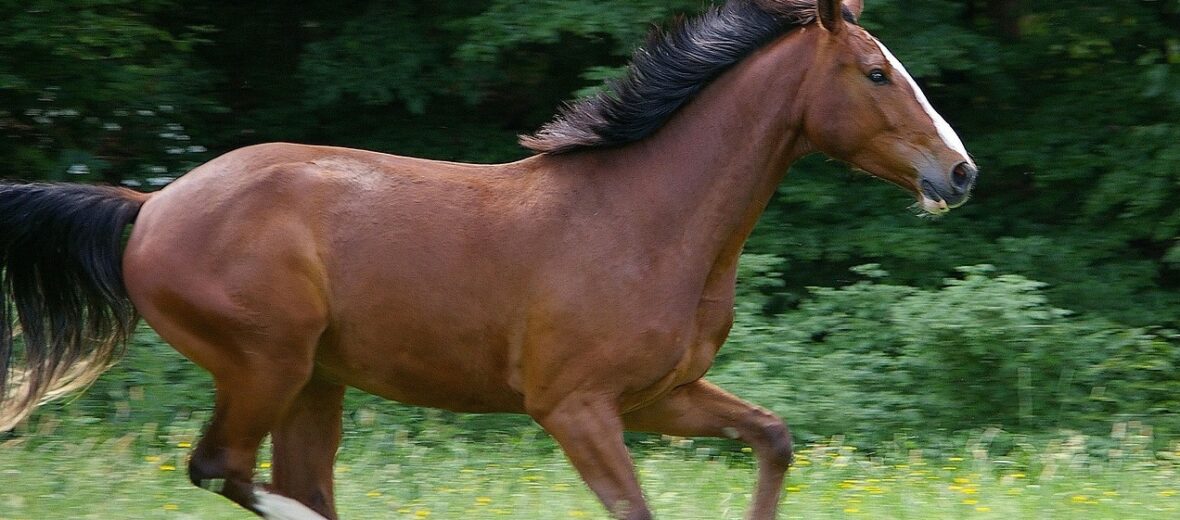
Ever since around 4000 BC, humans have been in league with the horse. They have been our companions in the field, as pets, as friends, and even in battle. There are so many cool things to learn about these magnificent creatures. They also have big hearts. No, literally. Their heart can weigh up to 10 lbs. You might have also wondered why they have such large nostrils. Well, they can’t breathe through their mouth, only their nose.
First the Stats…
Scientific name: Equus caballus
Weight: Up to 2,200 lbs.
Length: Up to 8+ feet
Height: Up to 6+ feet, at the shoulders
Lifespan: Up to 30+ years
Now on to the Facts!
1.) The word “chivalry” comes from the French word cheval, meaning horse.
2.) A male is called a stallion, a castrated male is called a gelding, a female is called a mare, a young male is called a colt, a young female is called a filly.
3.) “Hippophagy” is the term given to eating horse meat. Why on earth would you want to do that? They’re so beautiful.
4.) Horses have the largest eyes of any known land mammal. All the better to see you with.
5.) The horse has 205 bones in their body.
But wait, there’s more on the horse!
6.) They can walk and even run only hours after birth. How long does it take us humans again?
7.) “Old Billy”, is touted as the longest lived horse. He died at the ripe old age of 62!
Did you know…?
When a horse appears to be laughing, they are actually sniffing the air to determine if a smell is good or bad. This is called “flehmen”.
8.) The earliest known member of the horse family is called the “dawn horse”. It is also called “Eohippus”. This creature hails from 55 million years ago.
9.) They can sleep while standing or laying down. When standing, they simply lock their knees and doze off.
10.) Remember that famous scene from the movie The Godfather? They unfortunately used a real, decapitated horse’s head.
But wait, there’s still more on the horse!
11.) These critters never sleep at the same time. 1 or more horses will stay up, while the others sleep, to provide a lookout. Fire watch, but for equines. Pretty cool.
12.) Equines are herbivores (eat plant matter).
13.) Horses drink up to 25 gallons of water per day! Water weight makes up to 50% of their total weight.
Did you know…?
Not being known for having a large brain, a horse’s teeth take up more room in their head than their brain.
14.) The fastest horse was clocked at 55 mph! The usual top speed is around 27 mph though.
15.) Colorblind? No. But they are more adept at seeing greens & yellows than violets & purples.
But wait, there’s even more on the horse!
16.) A horse can see nearly 360°. This comes in handy when looking out for predators.
17.) Horse trailers are also called horse boxes. This invention was created by Lord George Bentinck, from the U.K. He invented it as a means to transport his horses from 1 race track to another.
18.) When they are running, all 4 of their legs are off the ground at the same time, with each gallop.
19.) Lots of horses exist in the world. There is an estimated 60 million horses in the world today; both wild and domestic.
20.) Hooves are made up of keratin. That is the same protein that makes up our hair and fingernails.
Yep, you guessed it, there’s even more on the horse!
21.) The only truly wild equine species still in existence is the Przewalski’s horse. This population only exists in Mongolia.
22.) It is impossible for a horse to vomit due to having no gag response.
Did you know…?
In the 1900s, there were approximately 15,000 horses in New York City. They produced enough manure in just a single year to create a pile 175 feet high and cover 1 acre of land. This caused the influx of around 16 billion flies! Horses were soon replaced by cars as the new source of transportation.
23.) Believe it or not, the horse’s closest relative is not a cow or any other farm animal. It is the rhinoceros.
24.) Talk about endurance… the Arab horse is capable of running up to 100 miles straight, without rest.
25.) There are over 300 different breeds of horse!
And there’s just a bit more on the horse!
26.) What the heck is a zebroid? It is a cross breed, produced by breeding with a zebra. Subsequently, a zebra and a donkey will produce a zonkey. There’s something you know now.
27.) Afraid of horses? You may have equinophobia.
28.) Out of all the horse breeds, the most popular is the American quarter horse.
29.) In 1 facet or another, 4.6 million Americans work in fields related to horses. The United States horse industry generates up to $39 billion annually all on just 9 million horses.
30.) Finally a gross fact: horses produce up to 10 gallons of saliva a day. Yummy!
Now a Short Horse Video!
Also, check out the Critter Science YouTube channel. Videos added frequently!
Want to suggest a critter for me to write about? Let me know here.



